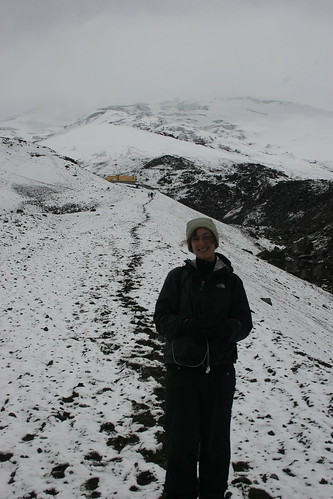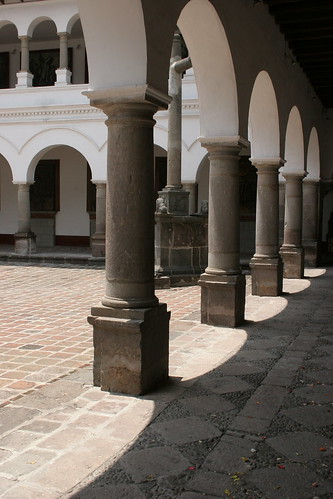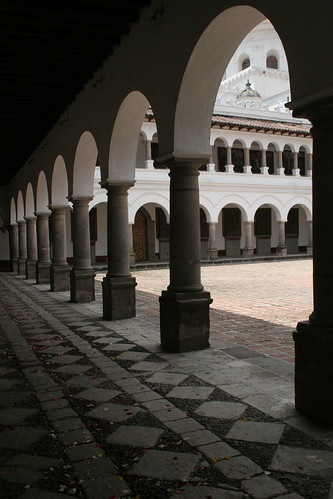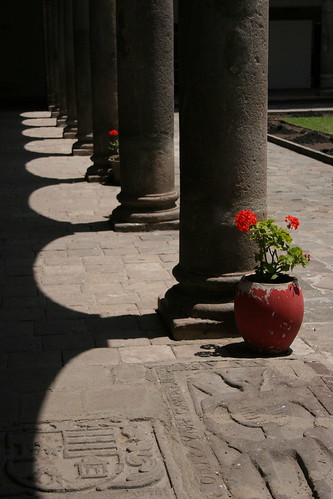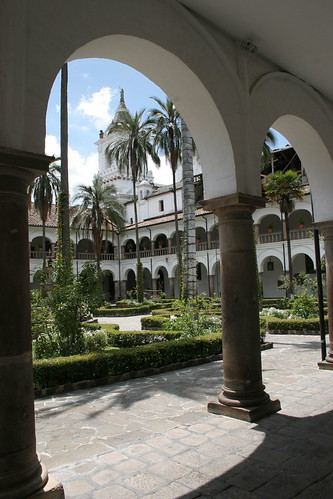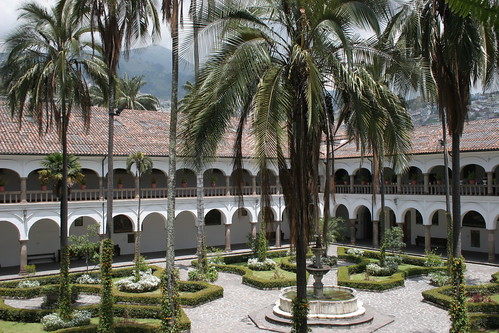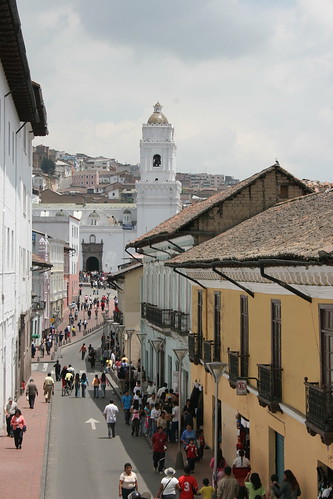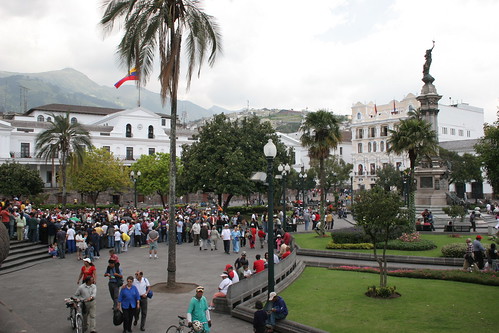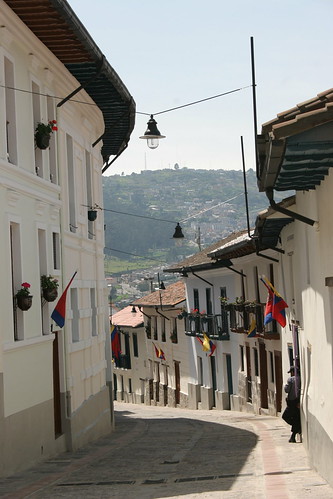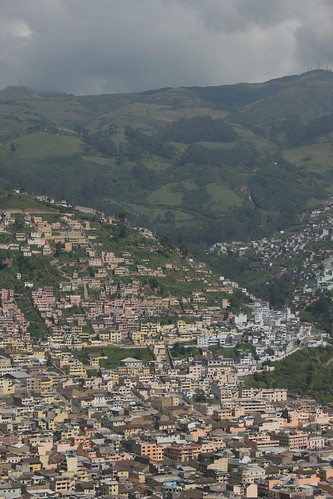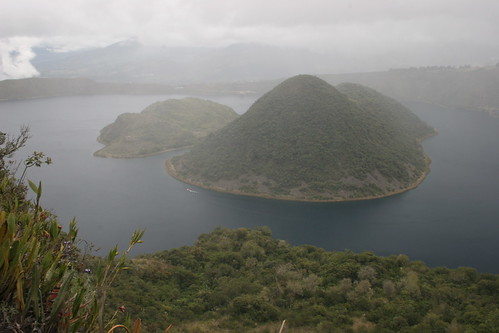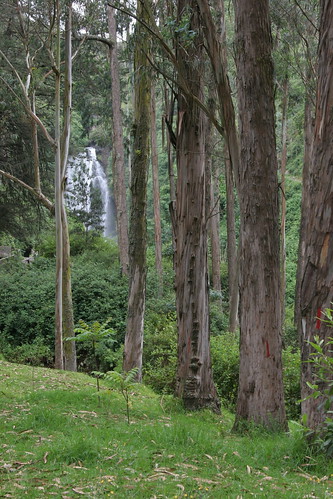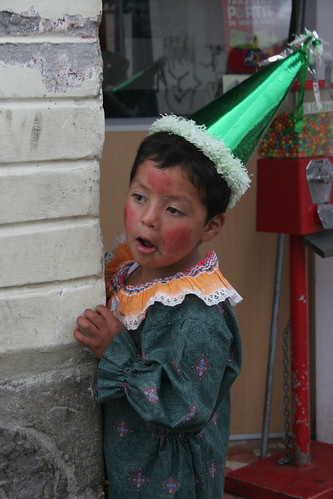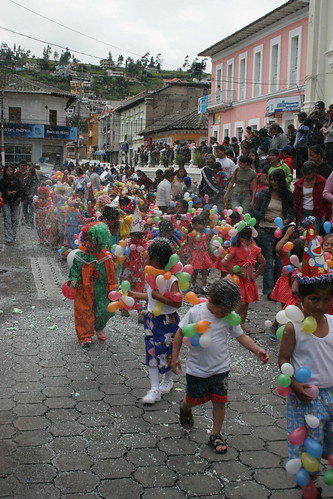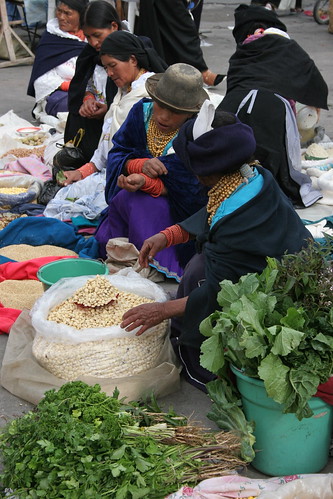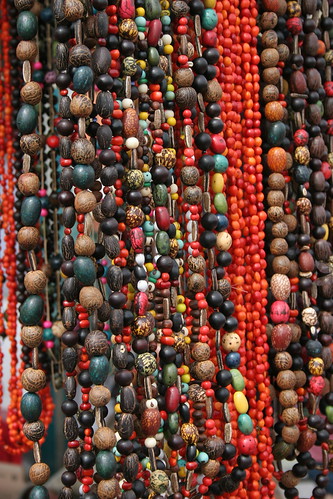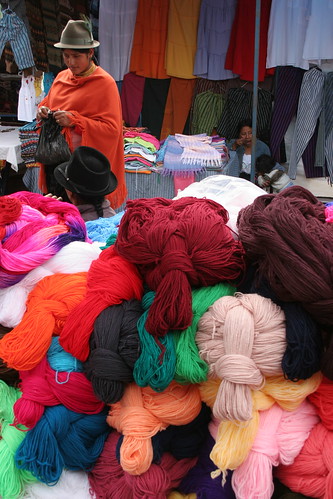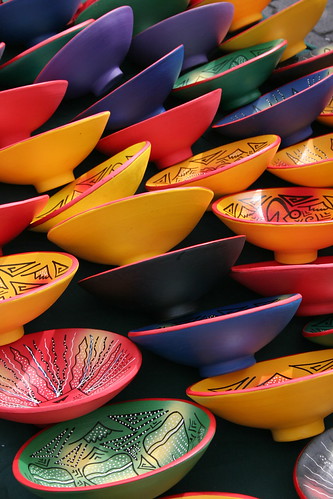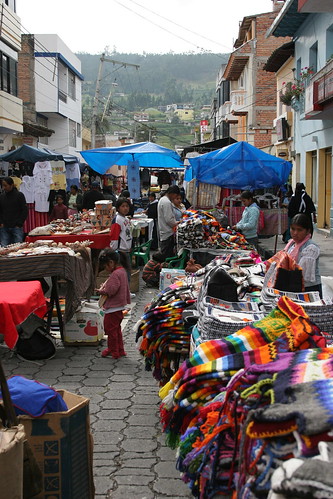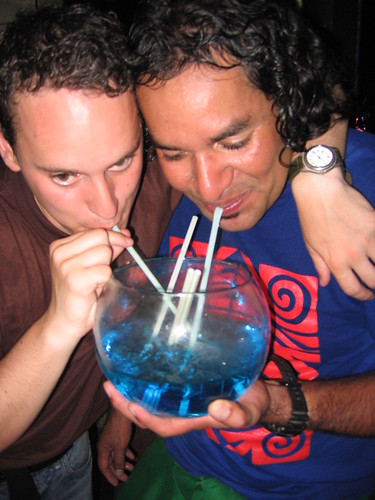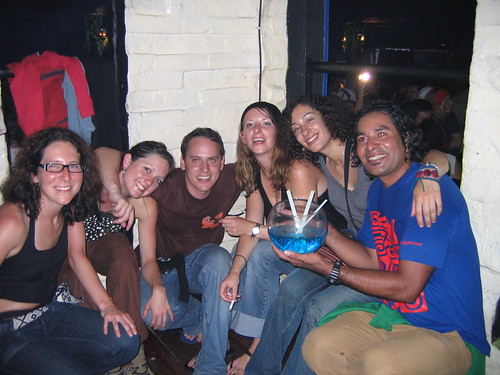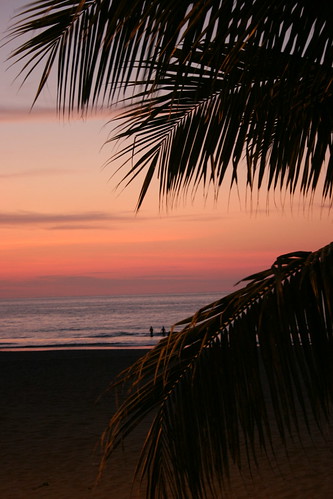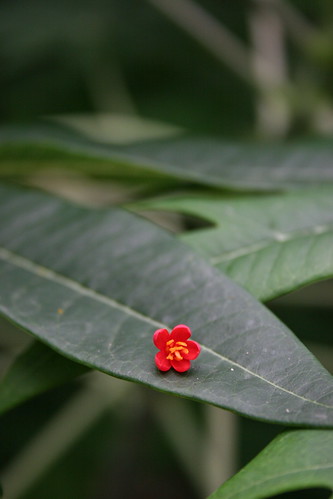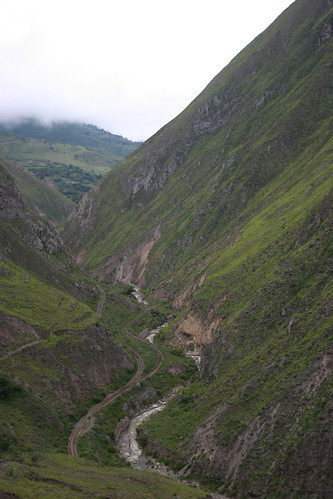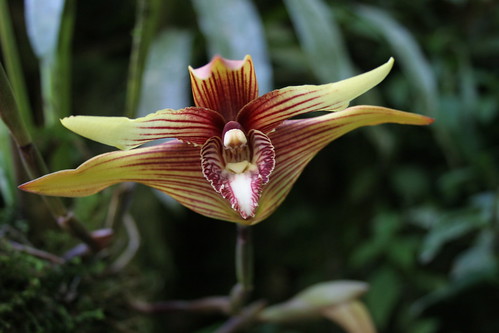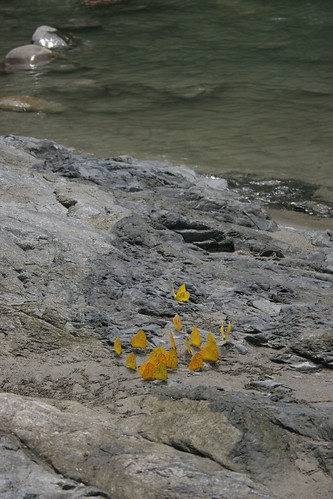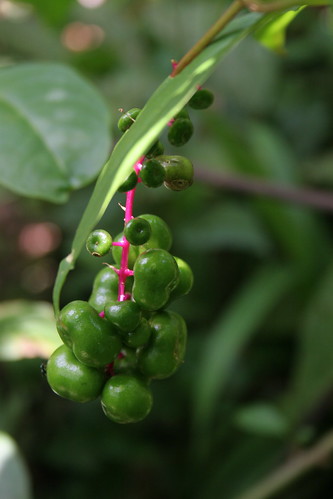Wednesday, February 21, 2007
Cotopaxi Volcano, Ecuador
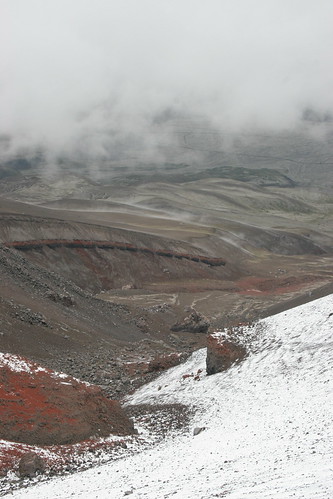
Quito is dead. The streets are empty and an eerie feel pervades the air. It seems everyone has left for the coast or the mountains during Carnival weekend. I'm not sure what to do so I consult my trusted guidebook. It recommends Cotopaxi volcano as one of Ecuador's highlights so I sign up to climb again. I must be mad. After all my whinging about climbing volcanoes here I am again doing it in the snow and paying 45 dollars for the privilege.
The drive to Cotopaxi National Park takes about two hours through the 'Avenue of Volcanoes', also part of the Pan-American Highway. Although there are only four active volcanoes enroute there are over 50 'volcanic peaks'. Once inside the park it's another hour's drive to the car park where we begin our trek to 4800 metres. Cotopaxi, which means 'collar of the moon' in Quichua, is the second highest peak in Ecuador (after Chimborazo) and is an active volcano having last erupted in 1904.
I'm sceptical as to whether I'll actually be able to see the volcano as it's been misty and drizzling all morning. I also hadn't anticipated snow at the starting point and temperatures of zero degrees. Luckily the guide has brought along several woolly hats and pairs of gloves for us to borrow.
Immediately the walk starts on volcanic sand and snow and it's a slow trudge uphill as my feet sink ankle deep into the ground. As the mist thickens visibility becomes very poor and for a while I can only see a few metres ahead of me. Although I stop several times I find it relatively trouble-free and am surprised I have no cause to swear along the way. For a couple of minutes the mist clears to reveal the Cotopaxi Summit although it very quickly mists over.
On reaching 4800 metres I feel like continuing (the 5-8 hours) to the summit at 5897 metres but this calls for crampons, ice-axes and probably some expertise.
Cloister, La Merced Monastery, Quito, Ecuador

Had a mad morning. Firstly the taxi driver got lost on the way to the Cuban embassy and spent half an hour trying to find it. On arriving at the embassy I'm told that they can't actually issue it here as I'm not flying to Cuba directly. Disappointed I decide to treat myself to pancakes at one of my favourite eateries in La Mariscal called the Magic Bean Café. I arrive too late as they're now on lunch menus. Instead I opt for a banana and strawberry smoothie and they manage to get that wrong as well. I'm in a bad mood now and decide that an afternoon of photographing cloisters will restore my serenity.
I take a taxi into the old town and the taxi driver claims I gave him a one dollar bill instead of ten. At the time I'm not entirely sure so don't question it but as soon as I step out of the cab I realise I was right. Not only that but he has overcharged me too. Great. I no longer feel sorry that his son hasn't been in touch since he moved to the UK years ago. Think I'm having a bad day.
My guide book claims San Agustín has 'beautiful' cloisters but I'm disappointed. It's practically a building site. Hopefully La Merced will be better but on arriving the gates are locked. On enquiring at a desk nearby I'm told that it's not open to the public. 'But my guidebook says it is' I say childishly. 'What book?' she replies sternly. It's no use and I'm about to leave when I see someone going through the gate. I ask him if I can take a quick look at the cloister but he says I'll have to ask the lady at the desk.
I have nothing to lose so I appeal to her good nature and ask if I can look inside. Sometimes this works and sometimes it doesn't. Surprisingly I don't even have to persuade her. She jumps up, opens the gate and tells me to stay on ground level as the Fathers will be angry with her if they find me wandering around.
I'm glad I did. The cloister dating from 1534 is beautiful, grand and austere at the same time. Coloured rose petals cover the paving stones all the way around. At the centre of the cloister is a fountain adorned with a statue of Neptune. This makes up for this morning's misadventures.
Monday, February 19, 2007
Equator, Ecuador
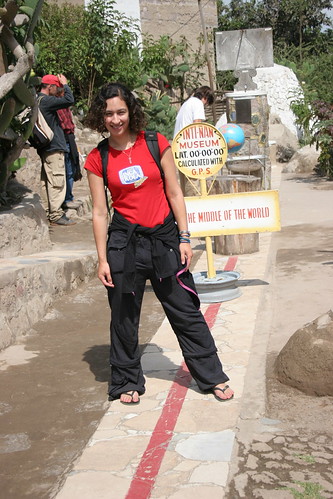
In 1736 Charles-Marie de la Condamine and his French expedition determined the location of the equatorial line at 23 kilometres north of Quito. Here at the Mitad del Mundo (Middle of the world) is a giant monument dedicated to him, located in a tourist complex.
According to modern GPS measurements the location is 150 metres away where the Museo Intinan is located. Here a guide conducts a number of experiments to prove this is the point where all forces equal out. It's amazing to see - on the equator water drains straight down the plug hole instead of spinning clockwise or anti-clockwise. A few metres to the left and right the water spins in each direction.
(Photo - Me on the Equatorial line)
Quito Old City, Ecuador

Back in Quito I explore the old city and am pleasantly surprised. Declared a World Heritage site, Quito's colonial centre, or the Old City, is full of narrow cobbled streets, leafy squares and beautiful churches and monasteries.
Up on Cerro Panecillo where there are great views of the city and surrounding mountains and volcano, the statue of the Virgen de Quito overlooks the Old City.
(Photo - view of the Old City from Cerro Panecillo)
Laguna Cuicocha, Ecuador
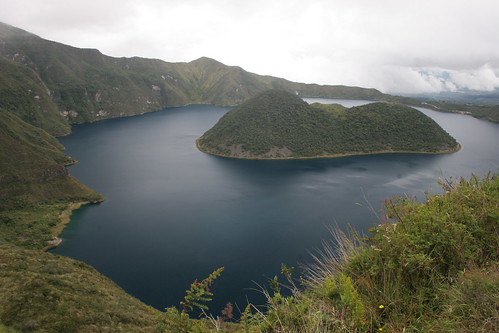
20 kilometres from Otavalo is the crater lake of Laguna Cuicocha (Guinea Pig Lake) at 3070 metres. The lake was formed when a volcano erupted and collapsed leaving two small resurgent peaks, shaped like a guinea pig, now rising out of the lake.
The walk around the crater is 8km and I anticipate an easy stroll as I'd don't feel much like an arduous hike. I should have known better after spending the best part of two months in the Andes - there is no such thing as Andean flat. The walk via the narrowest of paths is a gruelling undulating one, up countless steps and down steep ravines. The view at first is spectacular but after an hour I'm ready to go home which of course I can't.
It's also cold, misty and raining and I've usefully left my raincoat back in Quito. Three and a half hours later I've made it around but I'm wet and miserable.
Otavaleño, Plaza de Ponchos, Ecuador
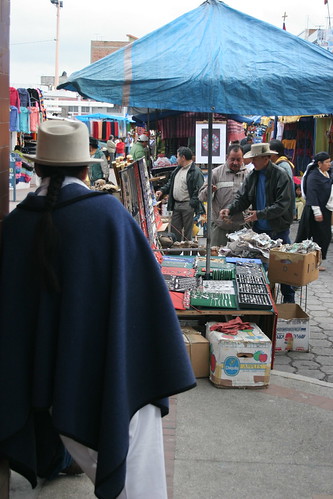
There are markets every day in Otavalo but the Saturday market comprises four different markets in different parts of town. There's a small and large livestock market, a food market and the huge artesanías or craft market that spills out from the Plaza de Ponchos to line the streets.
Otavalo is famous for its weaving but the locals not only sell the goods they make themselves but also bring handicrafts in from the rest of Ecuador, Peru and Bolivia. There's a mind boggling amount of stuff on sale that I'm completely overwhelmed. I do however manage to buy a number of trinkets including scarves, bracelets and bags, all of which I don't need and have no room for.
Sunday, February 18, 2007
Plaza de Ponchos, Otavalo, Ecuador
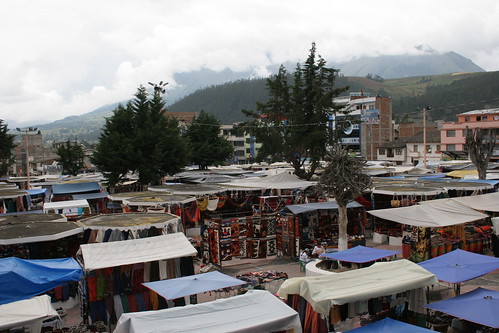
Otavalo, two hours north of Quito, has one of the most famous markets (and arguably the largest) in South America. The town itself is surrounded by mountains and lakes and receives lots of daytrippers and weekenders from Quito.
This is the land of the Otavalo Indians, famous for their production of woollens. Men here wear their hair long and plaited under a broad-brimmed hat, they wear white calf-length trousers and blue ponchos. The women wear colourful costumes of embroidered blouses and shoulder wraps.
Puerto Lopez, Ecuador
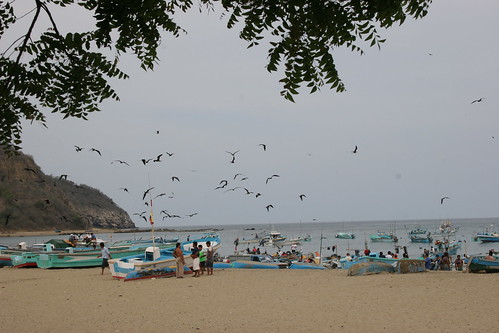
I'm not sad to be leaving Guayaquil although it has no less charm than any other commercial city.
It's two hours to the little fishing town of Puerto Lopez. I'm looking forward to not doing very much for a couple days by the sea. To be honest I'm not enjoying Ecuador as much as the other countries I've travelled through. I'm not sure if it's because I feel Ecuador doesn't have as much to offer or if I'm just tired and jaded and seen/done it all before in South America. Perhaps I would feel differently if Ecuador was the first country I visited.
Puerto Lopez is a quiet place beautifully set in horseshoe bay, perfect for relaxing. There are day trips on offer to the poor man's Galapagos - Isla de la Plata, or the Machalilla National Park. I decide on none of these options and spend my time lying in a hammock reading Anna Karenina which I've been lugging around since leaving the UK.
Flower (Heliconia sp.), Parque Histórico, Guayaquil, Ecuador
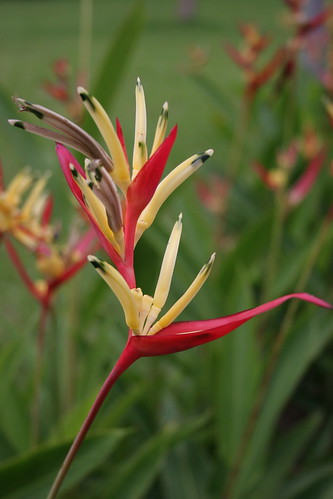
I'm keen to go to the Botanical Gardens, which are renowned for their species of orchids, but they're out of town and for safety reasons I'm advised not to go alone. It's also so hot and sticky I'm completely overcome with lethargy and decide instead to visit the Parque Histórico Guayaquil, where I'm also assured they have a variety of plants.
The park is divided into three sections - rural life, traditions and urban architecture. There are a number of animals on display including a puma but it's the plants I'm more interested in.
Guayaquil, Ecuador

A cockerel that sounds as if it's being strangled wakes me up at 4am and I'm unable to get back to sleep.
It's another long bus ride this morning, this time to Guayaquil, Ecuador's largest city, main seaport and commercial centre. Again the bus stops continually to pick up people, some with sacks of potatoes, grain etc. Others hop on briefly to sell ice cream, nuts and water. Soon the aisles are full of people standing and there's even a live chicken on board. The loud Ecuadorian music is really beginning to drive me mad and I start to wonder whether any bus drivers have been lynched because of it. I'm thinking about it. Ecuadorian buses would definitely be in my room 101.
For five hours the bus crosses from winding mountain roads into vast flat landscape covered in huge banana plantations (I spot Dole). The temperature also changes from cool to hot and humid and I feel like I'm back in the jungle. Walking the few blocks from my hotel to the Parque Bolivar leaves me drenched in sweat. The tiny park, also known as the Parque de las Iguanas, has many iguanas climbing trees or just walking around looking inquisitively at people.
(Photo - Parque Bolivar)
Saturday, February 17, 2007
Devil's Nose Train, Ecuador
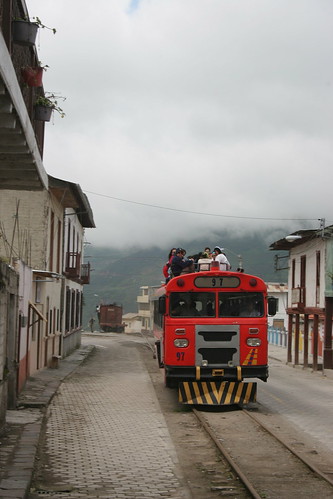
The Devil's Nose (La Naríz de Diablo) is billed as one of the most spectacular train rides in the world. I can't comment on that but it's great fun and passes through some of the most dramatic scenery I've seen so far in Ecuador.
From Alausí the train climbs to Devil's Nose, a perpendicular ridge rising in the gorge of the Chanchán to a height of 305 metres via a series of switchbacks built on a 5 1/2% grade. I'm no engineer so probably do not appreciate this incredible feat of construction.
I climb on to the roof of the carriage, slip by legs through the bar and hold on tightly. The train starts to descend through stunning a green landscape of mountains, valleys and deep ravines before climbing Devil's Nose (again I struggle to picture a face). Apart from being a jerky ride, it's hair-rising at times as the track runs very close to the cliff side.
As we climb and descend the mountainside, the train stops several times, a man jumps off and switches the track so we travel backwards and forwards until we return to Alausí.
Alausí, Ecuador
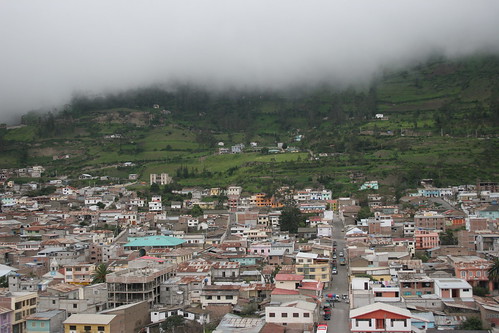
There's been a landslide so I'm unable to take the five-hour train ride from Riobamba to Alausí as I'd planned. Instead I need to take the bus to Alausí and take a round trip journey from Alausí along the stretch known as the Devil's nose.
Alausí is pretty little town surrounded by green hills, although there's not much to see or do, apart from climb the small hill crowned with another statue of Christ. From here the view of the town takes on a mystical appearance as low-hanging mist drifts in from the mountains.
Riobamba, Ecuador

I ride in the same cattle truck to Riobamba, an hour and a half away but this time I sit next to the driver to avoid being covered in dust.
Riobamba, the capital of Chimborazo Province, is a messy city but seems to me quintessentially Ecuador and South America. Street sellers line the sides of the roads and old men idly sit in doorways whispering comments as I walk pass.
As I only have an afternoon to explore I decide on the Cathedral as my first stop but walk five blocks the wrong way. As I retrace my steps dark clouds loom over my head and it starts to pour heavily with rain for the first time in eight days. I weigh up the options of sightseeing in the rain or going back to the hotel and decide I can't be bothered to walk around and decide Riobamba will be one place I won't get to know.
(Photo - local children in San Pablo de Pulingui, Chimborazo Province)
Mount Chimborazo, Ecuador
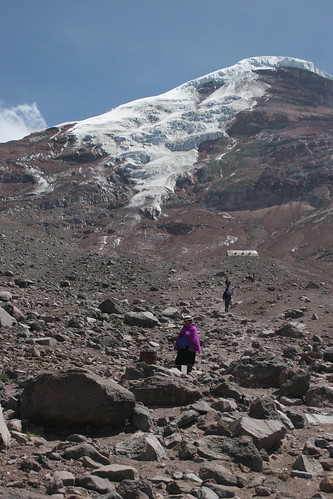
Chimborazo stands at 6310 metres and is the highest mountain in Ecuador, and arguingly in the world I'm told as the base is already at 2800 metres above sea level.
To reach the first refuge I ride in the back of a cattle truck along a bumpy dusty road for an hour and a half and arrive covered in a layer of dust. From here it's an hours walk up to the last refuge, Whymper, at 5000 metres. It's all uphill of course on rocky dusty terrain and the thin air makes it difficult to breathe. I think it's the highest I've been and even though the snowline is a few paces away I am uninspired. Maybe it's one volcano too many.
Pailón de Diablo, Baños, Ecuador
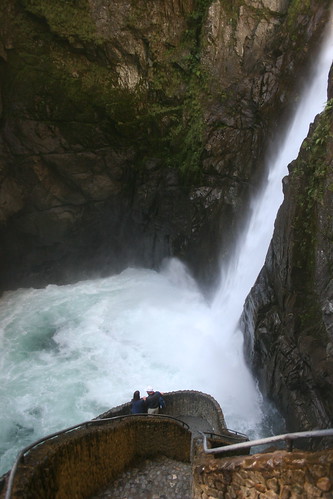
I took my malaria pills last night with a view to avoiding drowsiness in the day. Instead I embarked on a rollercoaster of several nightmares that I've decided I prefer the drugged state and lethargy.
I negotiated with my taxi driver from yesterday to take us to a couple of waterfalls outside town. The first, 'Manto de la Novia' (Bride's veil) is across the river. One dollar gets you across in a jerky cable car suspended high above the water.
The second is the 'Pailón del Diablo' (Devil's Cauldron), supposedly one of the 20 most spectacular waterfalls in the world (according to a postcard in the gift shop). On the walk up to the falls are some of the most stunning orchids I've seen.
The spray hits my face before I have a chance to see the waterfall. It is spectacular - a long white plume of powerful water thundering down the mountainside into a round frothy pool. The sheer force is mesmerising. The name 'Devil's Cauldron' refers to the face of the devil that is naturally carved into the cliff overlooking the waterfall. Maybe my imagination is lacking but I don't see it.
Back in Baños I go for an exfoliating massage. I'm not quite sure what I'm in for but it's an interesting experience. It consists of being rubbed down with oatmeal (painful but strangely pleasant on the mosquito bites). It looks like I've had several bowls of cereal thrown over me and am grateful when I'm allowed to shower off. I do now have lovely smooth skin.
Baños, Ecuador
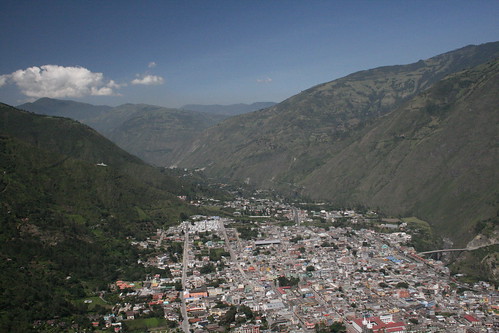
A four-hour bus ride from Tena on dusty mountain roads and I'm in the small spa town of Baños meaning 'baths'. I swallow so much dust on the way, as it's too hot to close the windows, that I have a sore throat by the time I arrive.
Baños is famous for its thermal springs and is a popular holiday spot for Ecuadorians, as well as gringos. Surrounded by green mountains, it's dwarfed by the snow-capped Tungurahua volcano, which means 'little hell' in Quichua. The volcano is still active and the town is on permanent 'yellow' alert since its evacuation in 1999 due to the threat of a major eruption.
I wander down the main street to visit the attractive Basilica and cloister and then take a taxi up to Bellavista, for a viewpoint of the town and mountains (I'm advised against hiking as two weeks ago a couple were stripped of all their belongings including their shoes).
(Photo - Baños from Bellavista)
Friday, February 09, 2007
Amazon Jungle, Ecuador
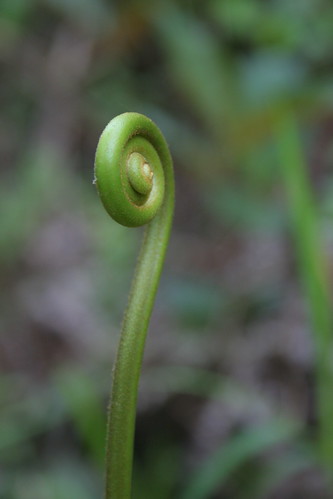
On my final day in the jungle I go tubing down the Higher Napo river. This consists of four tyres tied together with rope. I'm told to sit in one of the tyres submerging my bottom into the water. It's freezing cold and as we begin I have visions of an anaconda biting my behind. Two guides with paddles navigate us through the turquoise waters, dodging whirlpools and rocks and riding the white rapids. As the tyres spin around I find myself facing backwards half the time and completely unaware of the waves about to wash over my head.
After arriving safely at the river bank, it's a 40-minute hike through the jungle back to camp. As it's dusk and we're in swim suits we hot foot it back before the mosquitoes have a chance to feast on our wet bodies.
We're given the opportunity to visit a Shaman and take a natural hallucinogenic plant extract that apparently makes you vomit and spout lots of philosophical/foolish 'insights'. Funnily enough there are no volunteers. The Shaman turns out to be on holiday in Miami anyway.
Jungle trekking, Ecuador
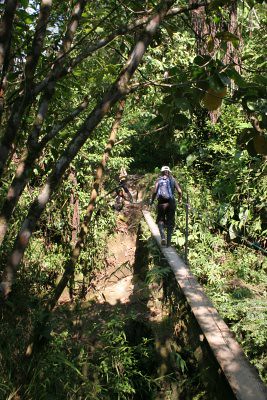
I've geared up for the big jungle trek, complete with rubber boots and covered in several layers of deet. Apart from melting plastic, the enormous quantities of the stuff in which I've drenched myself appears to have had no effect, as I'm still bitten all over. The mozzies are unfased.
The trek starts ominously. Five minutes from camp an orange-brown snake crosses the path and hurries into the bushes. I feel sick. Ten minutes later I'm crossing a roaring river on a narrow wooden plank with no hand support. The only other way is to wade across.
In some ways the jungle is like the Inca Trail and the phrase 'Andean flat' returns to haunt me. It's undulating and one minute I'm wading through swampy bog until I'm up to my knees in mud (I had wondered why I needed rubber boots) and the next climbing steep forested hills. Our guide hacks his way through with a machete, pointing out various plants and animals. I'm so uncomfortably hot and wet, I can barely concentrate on the botany lesson, even though I'm a plant fanatic.
At the edge of the Higher Napo river children are swinging on lianas. While the others strip off and jump into the river to cool off (and provide a satisfying lunch for the sand flies) I spot a whirlwind of butterflies flitting by the bank of the river and like a true photography geek take out my telephoto lens and get to work.
Subscribe to:
Posts (Atom)

